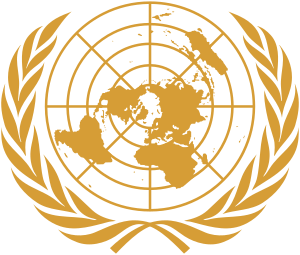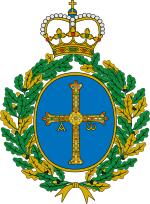United Nations Protection Force
The United Nations Protection Force (UNPROFOR; also known by its French acronym FORPRONU: Force de Protection des Nations Unies), was the first United Nations peacekeeping force in Croatia and in Bosnia and Herzegovina during the Yugoslav Wars. The force was formed in February 1992 and its mandate ended in March 1995, with the peacekeeping mission restructuring into three other forces (the United Nations Preventive Deployment Force (UNPREDEP) in Macedonia, and the United Nations Confidence Restoration Operation in Croatia (UNCRO) in Croatia, with restructured UNPROFOR operations ongoing in Bosnia and Herzegovina until their replacement by NATO and EU missions in December 1995).
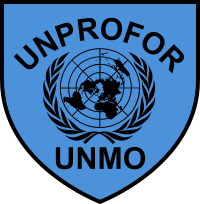
Personnel
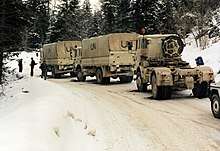
UNPROFOR was composed of nearly 39,000 personnel. It was composed of troops from Argentina, Australia, Bangladesh, Belgium, Brazil, Canada, Colombia, Czech Republic, Denmark, Egypt, Estonia, Finland, France, Germany, Ghana, India, Indonesia, Ireland, Italy, Jordan, Kenya, Lithuania, Luxembourg, Malaysia, Nepal, Netherlands, New Zealand, Nigeria, Norway, Pakistan, Poland, Portugal, the Russian Federation, Slovak Republic, Spain, Sweden, Switzerland, Tunisia, Turkey, Ukraine, the United Kingdom and the United States. According to the UN, there were 167 fatalities amongst UNPROFOR personnel during the course of the force's mandate. Of those who died, three were military observers, 159 were other military personnel, one was a member of the civilian police, two were international civilian staff and two were local staff.[1]
The commanders of UNPROFOR were:
- Lieutenant-General Satish Nambiar (India), from March 1992 to March 1993
- Lieutenant-General Lars-Eric Wahlgren (Sweden), from March 1993 to June 1993
- General Jean Cot (France), from June 1993 to March 1994[2]
- General Bertrand de Sauville de La Presle (France), from March 1994 to March 1995
- General Bernard Janvier (France), from March 1995 to January 1996
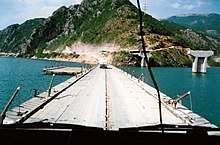
Prominent officers :
- Major-General Lewis MacKenzie (Canada) Sector Sarajevo 1992
- General Philippe Morillon (France) from October 1992 to July 1993
- Lieutenant-General Francis Briquemont (Belgium) 12 July 1993 to 24 January 1994
- Lieutenant-General Sir Michael Rose (United Kingdom) from 24 January 1994 to 25 February 1995
- Lieutenant-General Rupert Smith (United Kingdom) from 25 February 1995
Mandate
Croatia
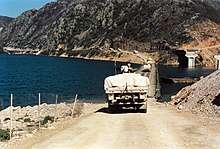
UNPROFOR was created by UN Security Council Resolution 743 on 21 February 1992 during the Croatian War of Independence.[3][4] The initial mandate of UNPROFOR was to ensure conditions for peace talks, and security in three demilitarized "safe-haven" enclaves designated as United Nations Protected Areas (UNPAs) located in various regions before the Republic of Croatia was admitted into the United Nations (UN) as a member but were controlled by the self-styled Republic of Serbian Krajina.

In 1992, the mandate was extended to so-called "pink zones" controlling access to the UNPAs (UNSC Resolution 762),[5] some border control and monitoring of civilian access to the Pink Zones (UNSC Resolution 769),[6] and control of the demilitarisation of the Prevlaka peninsula near Dubrovnik (UNSC Resolution 779).[7]
Bosnia and Herzegovina
In contrast to that of Croatia, the UNPROFOR mandate for Bosnia and Herzegovina was not to monitor a preexisting cease-fire. The mandate can essentially be divided into four phases;
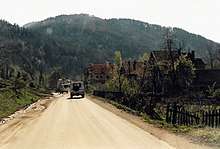
- Phase 1: Aid to Sarajevo - Beginning on 5 June 1992, UNPROFOR was responsible for the protection of Sarajevo airport as mandated by Resolution 758 for humanitarian purposes. UNPROFOR would run a security corridor for aid convoys between the airport and the city.[8]
- Phase 2: Escort of Humanitarian Aid - On 14 September 1992, UNPROFOR was given a mandate (United Nations Security Council Resolution 776) by the United Nations Security Council to provide protection to humanitarian organisations such as the International Committee of the Red Cross, and other activities as requested by the United Nations High Commissioner for Refugees such as scheduling convoys and negotiating safe passage. The Force would also be permitted to use self-defence if armed persons attempted to prevent it from carrying out its mandate.[9]
- Phase 3: The Protection of Safe Areas - The next expansion of the mandate was on 16 April 1993 with United Nations Security Council Resolution 819 declaring the town of Srebrenica a "safe area" free "from armed attack or any other hostile act."[10] In May 1993, Bihać, Sarajevo, Goražde, Žepa and Tuzla were also added as "safe areas".[10]
- Phase 4: Monitoring the Muslim-Croat Federation and Weapons Exclusion Zones - Eventually, UNPROFOR monitored a US-brokered cease-fires in Bosnia in February 1994, creating the Muslim-Croat Federation.[11] UNPROFOR was responsible for monitoring the zones of separation and weapons control points. In addition, the UNSC increased UNPROFOR's authorized strength to monitor weapons exclusion zones, but never actually altered the operation's mandate.[10]
On 31 March 1995, UNPROFOR was restructured into three coordinated peace operations. On 20 December 1995 the forces of UNPROFOR were reflagged under the NATO led Implementation Force (IFOR) whose task was to implement the General Framework Agreement for Peace in Bosnia and Herzegovina (GFAP – otherwise known as the Dayton Accords or Dayton Agreement).
Course of action
February 1992 – March 1993
Cedric Thornberry was director of UNPROFOR Civil Affairs at the beginning of the mission in February 1992. By the end of its first mandate in March 1993, UNPROFOR had some success in restoring peace in Croatia, notably obtaining the removal of the Yugoslav People's Army (JNA) in May 1992. However, civil unrest was such that terror, discrimination and "ethnic cleansing" were still present. Local Serb forces managed to complete their cleansing of the UNPA areas, started in 1991, that left only 279 Croats there out of a pre-war population of 102,000.[12]
The situation was problematic mostly because of the non-cooperation of local Serb authorities, and because of later major Croat military offensives. Additionally, the situation for which UNPROFOR had been designed had significantly changed. The Croat part now refused to negotiate its sovereignty on the UNPAs and Pink Zones, which the Serb part would not accept. Establishment of the "Republic of Serbian Krajina" further complicated the situation.
The Opening of the Sarajevo Airport was conducted by the Canadian Operational Force, which moved within the Theater of Operations from Croatia (Surac) to the combat zone of Sarajevo. The Canadian Force included the French-speaking Royal 22e Régiment, with the attachment of N Company of the English-speaking 3rd Battalion, The Royal Canadian Regiment. The Canadian Contingent was deployed by train from Canadian Forces Base Baden-Soellingen and CFB Lahr, Germany.
In spite of hostile actions, Sarajevo international airport had successfully remained open. In the period from 3 July 1992 to 31 January 1993, the humanitarian airlift organised by UNHCR under UNPROFOR protection brought in 2,476 aircraft carrying 27,460 tons of food, medicines and other relief goods.
Distribution of humanitarian aid was disrupted due to non-cooperation and even hostile actions (mines, small arms fire, RPG) of the parties in the field, especially from the Bosnian Serb forces. Nonetheless, from November 1992 to January 1993, a total of some 34,600 tons of relief supplies had been delivered to an estimated 800,000 beneficiaries in 110 locations throughout Bosnia and Herzegovina.
March 1993 – February 1994

Croat incursions
On 6 July 1993, new tensions arose following the Croatian government's decision to re-open the strategic Maslenica bridge on 18 July – Croatia was cut in half while the bridge was in Serb hands. The UNPROFOR forces mandated to monitor the withdrawal of Croatian forces from the area had been unable to deploy, due to the refusal of access by Croat authorities. The Serbs shelled the bridge which was partially destroyed on 2 August. On 12 August, negotiations for a cease-fire began in Geneva, but were unsuccessful. Eventually, Croat forces retreated to their positions of before the incursion.
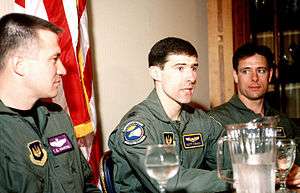
Operation "Deny Flight"
In mid-March, unidentified airplanes dropped bombs onto villages in the vicinity of Srebrenica violating the "No-Flight zones" for the first time. The Bosnian Serbs were accused of responsibility for the bombing but denied it. On 31 March, a resolution was voted authorising the nations contributing to UNPROFOR to take "all necessary measures" to prevent military flights from the belligerents in the no-flight zones ("Operation Deny Flight"). French, Dutch and American airplanes were deployed to enforce the resolution. In total, until 1 December 1994, 3317 violations were observed. On 28 February 1994, four military aircraft were shot down by NATO fighters over Bosnia and Herzegovina.
Safe areas
From March 1993, Serb para-military units killed a great number of civilians, destroyed habitations, prevented the UNHCR from delivering humanitarian aid, and forced thousands of Bosniak refugees to flee to the town of Srebrenica. 30 or 40 persons were dying daily from military action, starvation, exposure to cold or lack of medical treatment. Resolution 819 attempted to address this issue by declaring Srebrenica a "Safe Area". Resolution 836 authorized UNPROFOR "acting in self-defense, to take the necessary measures, including the use of force, in reply to bombardments against the safe areas by any of the parties or to armed incursion into them or in the event of any deliberate obstruction in or around those areas the freedom of movement of UNPROFOR or of protected humanitarian convoys" .[13] To implement the deterrence, around 7600 reinforcements were sent and air support was organised in coordination with NATO.
War in Bosnia
In May 1993, intense fighting broke out in Central Bosnia between Bosniaks and Bosnian Croats. Croat para-military forces, committed atrocities against Serbs and Bosniaks. The massacre in the village of Ahmići, on 16 April 1993, is an example of the savagery of the terror.[14][15] Tihomir Blaškić was the officer of the Croat HVO army formation who was tried and convicted at the ICTY over his responsibility for this massacre. Blaškić served almost nine years in prison before the appeals panel acquitted him of most of the charges in July 2004, as the defence proved that he did not command all the HVO units in the area or any paramilitary units.[16]
On 24 September, the Security Council was informed by the Croatian Government that if the mandate of UNPROFOR was not amended to promote energetic implementation of the relevant resolutions of the Security Council, Croatia would be forced to request UNPROFOR to leave the country not later than 30 November 1993. Subsequent redefinition of the mandate occurred.
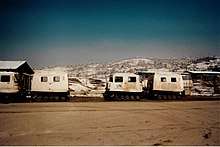
At the end of the year, the warring parties attempted to come to a cease-fire. The truce was implemented between Croat and Serb forces, but fighting went on in Bosnia between Bosniaks and Croats, and the humanitarian situations continued to deteriorate. Notably, Sarajevo continued to be bombarded by Bosnian Serb forces. It was also reported that units of the regular Croat army were supporting Bosnian Croat forces with heavy equipment and men, removing their insignias. This led to further protests from the UN. Use of force began to be discussed at a NATO summit held in Brussels on 10 and 11 January 1994. The Bosnian Serbs, following talks with high-ranking officials of the Russian Federation in Moscow, agreed to open the Tuzla airport for humanitarian purposes. At the same time, the relieving of UN troops in Srebrenica was allowed and the Canadian contingent was replaced by a Dutch contingent.
The situation in Sarajevo, however, remained extremely tense, with Bosnian Serb sniper fire deliberately aimed at civilians, and artillery and heavy mortar fire aimed at population areas. This strongly shaped Western public opinion, as a number of journalists were operating in Sarajevo, and murdered civilians were seen in the evening news on a regular basis. On 4 February 1994, a mortar shell fired at a suburb of Sarajevo killed 10 people and wounded 18. The next day, 5 February 1994, a mortar exploded in Sarajevo's Markale market, leaving 68 dead and 200 injured in what was so far the bloodiest incident in Sarajevo in the 22 months of fighting.[17] Exasperation at these provocations grew to the point where an ultimatum was sent, requiring the removal or surrender to UNPROFOR of all heavy guns 20 km from Sarajevo (Bosnian and Bosnian Serb, with an exception for Pale) within ten days. The ultimatum was satisfied on 17 February, with the heavy weapons that were not removed being regrouped in seven UNPROFOR-controlled spots.
On 23 February 1994, the cease-fire was brokered between Croat and Bosnian forces – the Washington Agreement – which ended their one-year-long war and united the sides as the Federation of Bosnia and Herzegovina. UNPROFOR's role in this was to monitor the cease-fire and in addition even helped to rebuild local infrastructure and staff checkpoints within the federation area.[10]
March 1994 – November 1994
Positive developments and extension of mandate
On 24 March 1994, a plan for the re-opening of the Tuzla airport, for UNPROFOR and humanitarian use only, was published.
On 29 March 1994, in Zagreb, representatives of the Government of Croatia and the local Serb authorities in UNPAs concluded a cease-fire agreement aiming to achieve a lasting cessation of hostilities.
Concurrently, the mandate of UNPROFOR was extended for another six months, and reinforcements were sent, amounting to 10,000 troops and a few hundred policemen and observers.
During 1994, UNPROFOR troops in Bosnia came under increased military attacks, resulting in several battle engagements (Operation Bøllebank, Operation Amanda), with Bosnian Serb forces.
Assault against safe areas
Shortly after the cease-fire between Croat and Serb forces, the Bosnian Serbs launched an assault against the Safe area of Goražde, heavily shelling the town and surrounding villages. Protests and exhortations from the UN Security Council turned out to be ineffective, and on 10 and 11 April 1994, NATO launched air strikes against Bosnian Serb positions. In retaliation, Bosnian Serb forces captured many UN personnel, using them as human shields at sites expected to be bombed. The bombings turned out to be much less effective than the recent Gulf War, which had conditioned the public's understanding of air strikes. In spite of the demonstration of power of the NATO, and protests of good faith from the Serbs, the shelling continued. In a similar situation to what had happened in Sarajevo, an ultimatum was issued, and by the 24th, most of the Serb troops had complied. These incidents led to another reflection about the status of the Safe Areas.
Attempts at peace
Several Peace Plans had been rejected (the Carrington-Cutiliero plan, the Vance-Owen plan, the "HMS Invincible" package, the Owen-Stoltenburg plan, and the European Union Action Plan). At the end of July, a blueprint was designed by the Contact Group, consisting of the United States, United Kingdom, France, Germany and Russia, which was accepted by the Croat, Serb and Bosnian parties. The Bosnian Serbs, however, refused the plan. In early August, in an attempt to coerce the Bosnian Serbs into accepting the plan, the Serbian government cut political and economic relationships with the Bosnian Serb leaders. This decision was welcomed by the UN Security Council. On 23 September, the UN Security Council officially welcomed the agreement of the warring parties to the peace plan, condemned the Bosnian Serb refusal, and strengthened the sanctions against the Bosnian Serb entity.
Bosnian Serb Isolation
On 23 September 1994, in retaliation to the Bosnian Serb obstruction to the Peace Plan, the Security Council, by its Resolution 942, severed all commercial and monetary links to the Bosnian Serb entity. Notably, this cut the flow of fuel to the Bosnian Serbs, a hard strategic blow.
Due to the extreme position taken by the Bosnian Serb government, the Yugoslav Federation (Serbia and Montenegro) itself had to take a strong stance against the Bosnian Serb entity. This led to the quasi-complete diplomatic isolation of the Bosnian Serb entity.
Deterioration in security
In August 1994, the situation deteriorated again, particularly due to sniper activity, and despite the anti-sniper agreements. In Sarajevo, the bloody "Sniper Alley" became famous and infamous . Deliberate attacks against UNPROFOR personnel or aircraft became frequent.
In October, the Bosnian Muslim forces, trapped in the Bihać pocket, attacked the Bosnian Serb forces in an attempt to end the siege of the city. The attack and the ensuing counter-attack by the Bosnian Serbs induced terror in the local population and another massive exodus of refugees. In deliberate contradiction with the "Safe Area" status of Bihać and the "No-flight" zones, Bosnian Serb airplanes made repeated attacks in the Bihać area, using cluster bombs and napalm.
In reaction to this threat, on 21 November, NATO airplanes destroyed the Udbina airstrip, located in the UNPA Sector South in Croatia. The following days, NATO airplanes again had to intervene, against Bosnian Serb anti-air missiles sites which had opened fire upon British jets, and against artillery sites which shelled Bihać. Instead of lowering their profile, the Bosnian Serbs retaliated by taking UN personnel hostage and restraining humanitarian aid transit.
On the diplomatic scene, all efforts to come to a cease-fire turned out to be to no avail, here again mostly because of Bosnian Serb obstruction—Dr. Karadžić declined the invitation of the UN Secretary-General.
UN hostages and the Vrbanja bridge
On 26 May 1995 following NATO air raids on Pale as the Bosnian Serbs defied another UN ultimatum on heavy weapons, around 400 Blue Helmets were taken hostage, brought to strategic points as human shields, and shown in chains on Serbian TV.[18]
On 27 May 1995, General Mladić along with General Nuhić launched an assault against the UN observation point of the Vrbanja bridge. At 5 in the morning, the French captain commanding the position lost contact with the 12 men and went to investigate. A Serb dressed with a blue helmet and French body armour and uniform attempted to take him hostage, but was deterred by the escort, and the officer managed to escape. In the following hours, after intense shelling by ERC 90 Sagaie armoured vehicles, the French stormed the post, killing four Serbs and capturing four others. Two French soldiers were killed and 17 were wounded.[19]
At 12 o'clock, the Bosnian Serb radio broadcast that General Mladić had ordered to
deploy the captured members of UNPROFOR, and the other foreign citizens who had acted as enemies of the Serbian people, at command posts, depots and other important facilities. The United Nations in this particular situation have decided to hire a murderer, it is called the NATO alliance. It is a hired killer. If NATO wishes to continue with its air strikes then it will have to kill the UN troops here on the ground, because we have positioned UN troops and observers around potential targets that NATO might decide to go for. The international community therefore will have to pay a very heavy price. And it will not stop at that. The Serbs are determined to make a point to the whole world.
— Jovan Zametica, Karadžić's spokesman
On the 30 May, Ratko Mladić phoned Rupert Smith and agreed not to put hostage Blue Helmets in chains, but to merely "bring" them on strategic sites. He also demanded apologies for the death of the four Serbian soldiers killed by the French at Vrbanja bridge, threatening to "be unable to guarantee the safety" of the UN forces in Goražde.[20]
The fall of Srebrenica
On 12 July 1995 UNPROFOR failed to deter the Bosnian Serb attack on Srebrenica because they were not able to sufficiently reinforce the Dutch battalion in place, and the city was overrun. When the dual key practices effectively prevented any serious air support from materialising all the Dutch could do was evacuate the women and children. The Serbs held the Muslim men and massacred thousands of them.[21] The safe area of Zepa also fell to Bosnian Serbs on 25 July The events in Srebrenica led to the Peacekeeping Best Practices Unit (PBPU) report[22]
NATO initiated "Operation Deliberate Force" on 30 August 1995 in response to further provocations by Serb forces. At this point, UNPROFOR had become "militarily engaged" with NATO against the Bosnian Serb Army. NATO and UNPROFOR were increasingly difficult to separate by fall of 1995 in terms of both policy and actions taken on the ground.[10]
In retaliation for the NATO bombings, the Serbs proceeded to retrieve their confiscated heavy weapons from the UN-controlled concentration points by force. The peace-keepers, massively out-numbered, had to surrender after brief symbolic fights. In several instances, Blue Helmets were surrounded in weapon storage areas by massively superior Serbian forces. General Hervé Gobillard, commanding officer for UN troops in Sarajevo, stated that the peacekeepers were "merely limited in their movements, yet [had] arms, ammunition food for many days and strict orders to defend their positions", but in the light of the hostage-takings, concerns were raised and the UN-led bombing stopped. Also, Serbian retaliations against civilians because of the bombings caused 70 dead and 150 wounded in Tuzla, and 5 dead in Goražde.
Later one winter's day British UN troops carrying side arms were confronted by General Mladić skiing down the piste at Sarajevo's former Olympic skiing resort but made no move for their guns; skiing behind Mladić were four bodyguards. Despite his Hague warrant, they decided to carry on skiing. Later NATO had a rethink, sending commandos to arrest war crimes suspects, but Mladić simply went underground. No amount of NATO action or UN demands, or even a $5 million bounty announced by Washington, could bring him in for a long time. However, in May 2011, Mladić was finally arrested and sent to the ICTY.[23]
Operation Storm and Dayton Agreement
The above actions and the operations by Croat Forces in the Krajina in Operation Storm in August 1995 altered the political geography of BiH. Collectively these ultimately led to the Dayton Agreement and the deployment of the NATO led IFOR on 20 December 1995 to ensure the adherence of the Former Warring Factions (FWF) to the Military Annexes of The General Framework Agreement for Peace in Bosnia and Herzegovina. Some of UNPROFOR troops were folded into the new IFOR forces, but for all intents and purposes, UNPROFOR no longer operated in Bosnia and Herzegovina.
Perception in participating countries
The situation of the field was complex, due to the fact that there were three warring parties, and numerous para-military units, responsible for the most atrocious actions, and outside of the regular chain of command. Also, most of the parties would use ambiguous tactics. For instance (and not exhaustively) :
- the Bosnian Serbs would use massive shelling of villages for their "ethnic cleansing", while alleging their good faith.
- General Mladić had ordered the shelling of a sector near the Sarajevo airport, while he was on official visit, on the express purpose of appearing heroic in front of the French Blue helmets and to cast doubts as to who was responsible for the bombardment.
- The Bosnian party would use the Safe Areas to the best of the tactical situation to storm Serb positions or villages.
- In numerous occasions, small groups of one of the warring parties would progress between enemy positions and UN positions and open fire on the Blue helmets in the hope of triggering a response from the UN troops.
- In the event of the Srebrenica massacre, which triggered a number of investigations to determine the reasons for the failure of the UN to deter Serbian forces to storm the town, accusations have been made, notably by General Morillon, that the Serbs actually fell in a propaganda trap used by the Bosnians to reinforce their image of victims and blur their use of Safe Areas as bases. Morillon said that he thought the hatred of the Serbs toward the population of Srebrenica had been largely underestimated by all parties, and the massacre could be explained as a loss of control of the Serbian hierarchy upon some of its troops. Morillon's speculations about "loss of control" were rendered irrelevant by the verdicts of genocide handed down by the International Criminal Tribunal for the Former Yugoslavia.[24]
A great deal of resentment and frustration arose in the participating countries, especially in those whose troops had been in contact with the most outrageous situations; for instance (and not exclusively)
- The involvement of the British battalion, especially concerning the Ahmići massacre, inspired the TV series Warriors by the BBC.
- The involvement of the Dutch battalion (DutchBat) in Srebrenica inspired The Enclave.
- The involvement of the Canadian battalion (CanBat) in Krajina inspired Peacekeepers.
- The general situation in Sarajevo inspired the comic Sarajevo Tango, by Hermann. (See samples , )
- The attack against French Blue Helmets by Serb forces disguised as French U.N. troops on the bridge of Vrbanja .
- The taking of hostages amongst UN peace-keeping personnel when Bosnian Serb forces proceeded to retrieve their heavy weapons from UN controlled regroupement points by force.
- Particularly moving episodes, such as the "Sarajevo's Romeo and Juliet",[25] inevitable in any conflict, but abundantly mediatised. The "Sarajevo's Romeo and Juliet" incident inspired the documentary Romeo and Juliet in Sarajevo.
- In French, the word "sniper" entered the common vocabulary after "Sniper Alley" became famous, and it quite supplanted the usual words tireur d'élite, tireur embusqué or franc-tireur.
See also
- IFOR
- SFOR
- Kosovo Force
- EUFOR Althea
References
- "Former Yugoslavia - UNPROFOR: Profile". Department of Public Information, United Nations. 31 August 1996. Retrieved 1 May 2015.
- "Chances for Peace: Canadian Soldiers in the Balkans 1992–1995". seanmmaloney. 2007. Archived from the original on 14 May 2008. Retrieved 26 March 2008.
General Jean Cot was UNPROFOR commander in July 1993. Secretary General Boutros-Ghali recalled General Cot to France in March 1994. He resigned in June. He was named Grand Officer de la legion d'Honneur with five citations, was awarded the Commander's Cross of Merit of the Federal Republic of Germany and the Legion of Merit (United States
- Bethlehem, Daniel L.; Weller, Marc (1997). The 'Yugoslav' Crisis in International Law. Cambridge International Documents Series. 5. Cambridge University Press. p. 498. ISBN 978-0-521-46304-1.CS1 maint: ref=harv (link)
- United Nations Security Council Resolution 743. S/RES/743(1992) 21 February 1992. Retrieved 10 April 2008.
- United Nations Security Council Resolution 762. S/RES/762(1992) 30 June 1992. Retrieved 10 April 2008.
- United Nations Security Council Resolution 769. S/RES/769(1992) 7 August 1992. Retrieved 10 April 2008.
- United Nations Security Council Resolution 779. S/RES/779(1992) 6 October 1992. Retrieved 10 April 2008.
- William J. Durch and James A. Shear (1996). Faultlines: UN Operations in the Former Yugoslavia. New York: St. Martin's Press.
- https://undocs.org/S/RES/776(1992)
- William J. James and john A. Shear (1996). Faultlines: UN Operations in the Former Yugoslavia. New York: St. Martin's Press
- Steven L. Burg & Paul S. Shoup. (1999). The War in Bosnia and Herzegovina. New York: M.E. Sharpe
- Jerry Blaskovich, Anatomy of Deceit: An American Physician's First-hand Encounter with the Realities of the War in Croatia
- Security Council Resolution 819, 16 April 1993, operative para. 1
- "Flashback: The Ahmici massacre". BBC News. 14 January 2000.
- Ben Cohen and George Stamkoski (1995) With No Peace to Keep. London: Grainpress Ltd. p. 173
- L´Humanité, 30 May 1995 (in French)
- The Independent, 29 May 1995
- L'Humanité, 30 May 1995 (in French)
- Marachak, M. Patricia (2008). No Easy Fix: Global Responses to Internal Wars and Crimes against Humanity. Canada: McGill-Queen's University Press
- Stephen, Chris (27 May 2011). "Lure of EU membership led to arrest of Mladic". The Irish Times.
- "Seven convicted over 1995 Srebrenica massacre". CNN. 10 June 2010.
- https://web.archive.org/web/20101021034825/http://edition.cnn.com/WORLD/Bosnia/updates/9604/10/
External links
- UNPROFOR official page
- UNPROFOR Dane veterans page
- Dutchbat 1 Netherlands
- Proceedings of the International Criminal Tribunal for the Former Yugoslavia. Testimony by Lieutenant Colonel Bryan Watters
- UN Protection Force (Yugoslavia) Medal awarded for 90 days' service in the Mission.
- Bosnia: a frustrating mission
- Audition du général Philippe MORILLON, commandant de la FORPRONU (octobre 1992-juillet 1993), commandant de la Force d'action rapide (1994–1996)
- Audition du général Jean COT, commandant de la FORPRONU
- General Philippe Morillon, Paroles de soldat, Balland, 1996
- General Philippe Morillon, Croire et oser, chronique de Sarajevo, Grasset, 1993
- Chief Logistics Officer UNPROFOR 1995 Abbas Ali Khan
